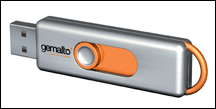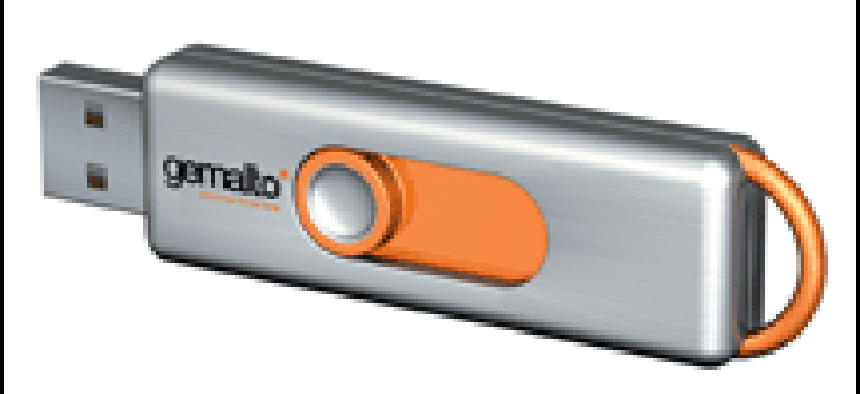
Connecting state and local government leaders
Are we doomed to carrying pocketsful of tokens and smart cards, and trying to remember dozens of complex passwords to ensure strong IT security? Maybe not.

A USB device from Gemalto performs two-way authentication of user and Web site.
Face it: authentication is a bear. Any scheme simple enough to implement easily is probably too weak. More secure schemes and additional factors inevitably lead to problems with scalability and management. So, are we doomed to carrying pocketsful of tokens and smart cards, and trying to remember dozens of complex passwords to ensure strong IT security?
'I don't think we're doomed,' said Chris Voice, CEO of Entrust Inc. of Addison, Texas. Many practical authentication tools exist and were demonstrated at last month's RSA IT security conference in San Francisco.
Unfortunately, the holy grail of a single authentication tool that will get us into everything probably is not attainable. Although passwords are relatively user-friendly, federal regulators have declared they are inadequate for online banking. The result is a plethora of newly released second factors for authenticating users: digital certificates, tokens that generate one-time passwords, simple grid cards for challenge-and-response schemes and many kinds of biometrics. All can have high management overhead, both for administrators and users.
Risk-based authentication is one way to keep authentication manageable. Higher levels of assurance generally add complexity that might not always be needed. Entrust's TransactionGuard is a real-time fraud detection tool that monitors online activity to detect suspicious patterns of behavior. A suspicious session can be blocked or trigger a request for higher assurance authentication on signing in. 'It allows you to do strong authentication, but only when the risk warrants it,' Voice said.
Authentication is a two-way street. How does the user know what network, application or Web site he or she is signing on to? Issuers of digital certificates and Web browser designers formed an industry group to address this question and came up with the Extended Validation SSL certificate. The certificate assures users that the site being visited really is the one intended.
EV certificates will work by default with Microsoft's Vista operating system, and at least two certificate authorities, Entrust and Cybertrust Inc. of Herndon, Va., have begun issuing EV certs that will work with Windows XP. Gemalto Inc. of Washington is announcing a product that adds another layer of security. The Network Identity Manager is a USB
device that lets the user and Web site mutually authenticate automatically without relying on the security of the computer you are working on.
'You don't have to trust your browser and PC,' when visiting a Web site, said Amol Deshmukh, marketing manager for Gemalto.





